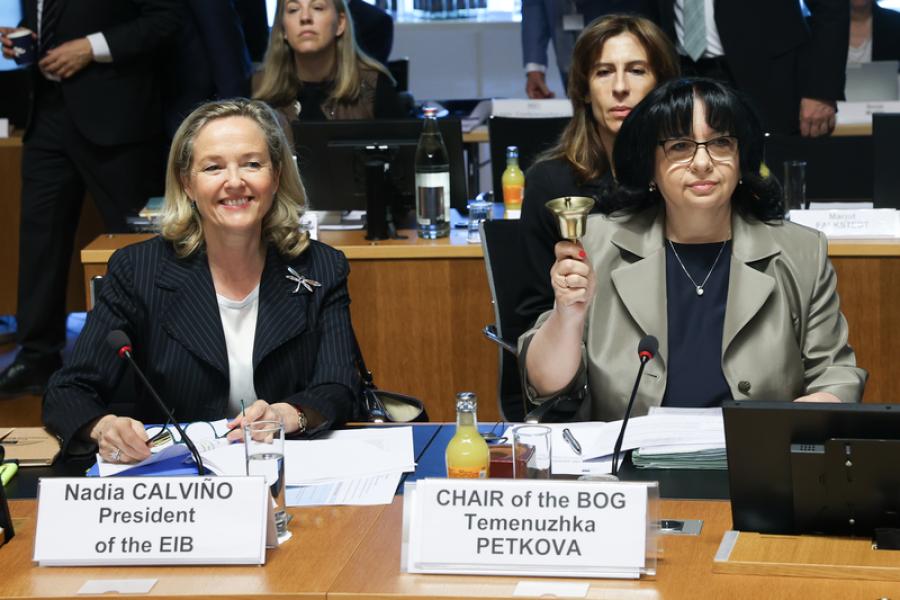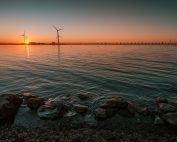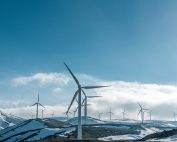4Subsea is a provider of technology that helps operators optimize energy production from subsea oil & gas fields and offshore wind farms. Experts link expertise with data analytics and digital services to maximise the lifetime of assets and reduce operational costs. Peter Jenkins, CEO at 4SUBSEA said in commentary for BalticWind.EU that the company brings to the market a set of IOT sensors, which are crucial for analyzing data. IoT sensors will reduce costs incurred when replacing e.g. cables.
4SUBSEA’s approach is to bring IoT technology into the wind industry. Jenkins believes that there is great potential, both to improve the operability of the wind farms and also to extend the service life of wind farms that are already in operation.
“As you gain data from wind farms in operation, you could also use the same data to do data-driven design to bring down possible new wind farms in the future”, Peter Jenkins says in Copenhagen.
4SUBSEA brings to the market a set of IoT sensors that are made for retrofit installation on winterize in existing farms.
“They’re all magnetic, they just snap on. They feed data back to the cloud, where we do advanced cloud computing on the data and we use that data to document saved life extension of the wind farm. So, say for instance, you have a wind farm with a 20 years design life. Using the sensors, we can typically document that it’s safe to keep producing for an additional 10 to 30% longer. This of course means that you can capitalize your investment over a longer timeframe, bringing down the levelized cost of energy”, he explained.
The most immediate value the company brings to the market is retrofittable, magnetic IoT sensors, that are ment to be retrofitted on existing wind turbines. 4SUBSEA uses those sensors together with advanced analytics to document safe extension of the service life of a wind farm.
“Then, over time as we accumulate data, you can also use the data from existing wind farms to do data driven design for future wind farms, so you can optimize the design further and reduce conservatism and costs for future wind farms”, he added.
For operations, typically the company must monitor load and monitor motions on the turbine, and feed this into algorithms with machine learning algorithms that give predictions of what’s going to happen ahead in time.
“We also have advanced algorithms that do anomaly detection, so you’re able to pick up on anomalies of things that are starting to go wrong in the turbine, which you can’t really define, and would be impossible for a person to detect because it’s depending on so many parameters. With these algorithms we get a “know it before it happens” functionality. So, the operator gets a heads up that something is starting to roll and they can take immediate action, and hopefully prevent stopping production, and reduce the cost of an eventual failure that is probably bound to happen further down the road unless you do something”, said CEO at 4SUBSEA.
Sensors will reduce costs incurred when replacing e.g. cables
The motion sensors can be used to monitor cable behavior. One of the largest problems, and largest insurance costs in the wind industry today is cable failure. The trouble with cable failure is, for one thing, it is very expensive, which is why there are so many large insurance claims related to it.
“The big trouble is if you have a cable failure, it typically takes you two years to replace the cable that has failed, meaning you’ll also lose two years of production, because you have to order a new cable, you have to bring it in, so they can actually do the action or the replacement for you. With these sensors, we strap them on, we monitor the response in the cable and by doing the analysis of that data we can help the operator predict if the cable is OK or if it will run into troubles, maybe 5 years ahead in time, maybe 10 years, and then we could give them a warning so that they can plan and take action so they are ready to replace if they have to replace”, Jenkins said.
Challenges for offshore wind are not problems but opportunities and possibilities
We asked Peters Jenkins about the challenges in the offshore wind sector. He said that it’s not really a challenge, more of an opportunity, but the company sees that the wind industry today is doing very much the same as oil and gas used to do, coming in with these specifications for instrumentation on different farms.
“What we bring to the industry is a standard IoT solution, which is off the shelf and can bring down costs tremendously compared to when the big operators go and make these bespoke specifications, which are slightly different from farm to farm, and from operator to operator. If they are willing to stand, rise and just use off the shelf IoT sensors, like you do in any other IoT industry, the cost will go down tremendously and work can start gathering much more data and you would create much more value. That’s a key thing”, Jenkins added.
“Many drivers of the future are talking about larger turbines, larger farms, and speeding up the design. But all of this actual data is an enabler to bring down the cost, data an enabler to reduce conservatism, data is an enabler to reduce operational issues during the operational phase by using more and more data. I think that this is huge so far. All the focus on investment is going into larger vessels, larger turbines. There is a huge untapped potential in starting to use more data, both in the design and in the operation”, he said.
IoT sensors technology in Copenhagen
Electric City 2021 is a huge opportunity to showcase new technologies for the offshore wind energy sector.
“It’s good to see a lot of people physically and meet them physically, again. It’s good for us to be able to showcase our technology and show how the sensors actually work. When we talk about IoT sensors and magnetic snap-on sensors it’s a bit blurry to people what it actually means. They can come by the stand, and they can touch it, they can play with it, they can put them on themselves, and then you see that they work. It’s good so far”, he said.















